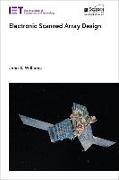Read more
This book covers the fundamental principles of ESA antennas including basic design approaches and inherent design limitations. These insights will enable better appreciation of existing and planned ESA systems including their application to earth observation.
List of contents
- Chapter 1: Introduction
- Chapter 2: Antenna principles
- Chapter 3: Synthetic arrays
- Chapter 4: Antenna figures of merit
- Chapter 5: Mutual coupling effects
- Chapter 6: Errors and tolerances
- Chapter 7: Grating lobes
- Chapter 8: Thinned arrays
- Chapter 9: Beamwidth and sidelobes
- Chapter 10: Beam shaping and spoiling
- Chapter 11: Reflector applications
- Chapter 12: Design practice
- Chapter 13: Radiating elements
- Chapter 14: T/R modules
- Chapter 15: Assembly, packaging, power, and thermal management
- Chapter 16: Technology base and cost
- Chapter 17: ESAs in space
- Chapter 18: ESA and reflector comparison
- Appendix A: Further reading
- Appendix B: Comments on MATLAB® code
- Appendix C: Geometry
About the author
John S. Williams received his bachelor's and master's degrees in physics from Caltech and the University of California at Irvine respectively and is a Senior Member of the IEEE. He worked on a variety of ESAs since 1980 at Hughes Aircraft Corporation, Raytheon and The Aerospace Corporation. He managed T/R module development, ESA demonstration and manufacturing technology programs. He is now retired.
Summary
This book covers the fundamental principles of ESA antennas including basic design approaches and inherent design limitations. These insights will enable better appreciation of existing and planned ESA systems including their application to earth observation.

